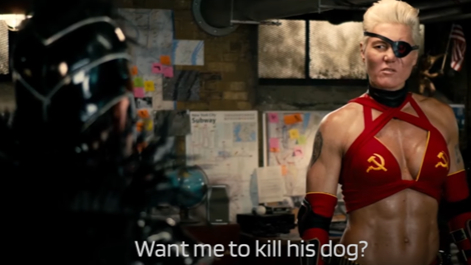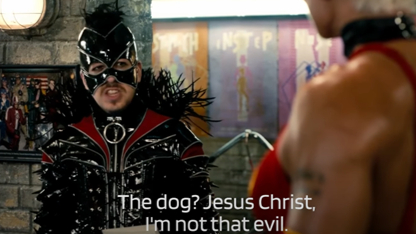To CG Dog or Not to CG Dog?
- Alex Iwanoff
- Sep 3, 2025
- 3 min read
When the trailer for Good Boy blew up online this summer, IFC moved the indie film from a limited run to a wide release. Why you may ask? Because this new horror movie is told from a dog’s point of view. And everyone online, unusually united for once, had the same visceral reaction: “That dog better not die”.
This is the unspoken contract between audience and filmmaker whenever an animal is on screen. It’s why Does the dog die? is a website, a meme and a shorthand for trust. Put a dog at the center of your film and you can expect viewers to project worry, empathy and protectiveness. Even villains know better than to hurt the pet... and if they dare, well, expect the Baba Yaga to come get them (and the audience to cheer him on).
But why do dogs move us so much? Ethologists remind us that they have evolved alongside humans for tens of thousands of years, becoming expert at reading our expressions and even developing eyebrows to communicate with us (or manipulate us into giving them treats!). That innate ability to connect makes them great performers... even though they don’t really know what they’re doing.
“Everything that the dog does, is a reflection of either my body language or tone of voice. You give very direct cues — one word and one syllable commands — and you get a quick reaction to what you’re asking him to do”, Teresa Ann Miller, dog trainer on White Dog
That’s why we understood John Wick’s killing spree after his puppy was murdered. That’s why Marley & Me remains one of the most manipulative movies ever made. And that’s why entire films and series can be built around dogs, sometimes without humans at all, like Homeward Bound: The Incredible Journey.
So why would a director ever use a CG dog instead of the real thing?
THE CASE FOR REAL DOGS
Real dogs bring authenticity, unpredictability and charm. Sometimes their improvisations become happy accidents, as when Milo in The Mask refused to let go of the bank money or the frisbee, allowing Jim Carrey to improvise around it.
But working with dogs is demanding: they miss marks, need extensive pre-production training and require trainers to give constant cues during takes. Which in turn means dialogue usually has to be dubbed later too. Productions also usually cycle through more than one dog for the same character, both to avoid overworking them and to draw on different strengths or quirks, creating a richer, fuller performance on screen.
On the other hand, you’ll be under heavy scrutiny from audiences and animal welfare organizations. That said, dogs have generally fared better than other animal actors. Unlike horses, there are few reports of systemic abuse and some canines have enjoyed star treatment, like Rin Tin Tin in the 1920s.
All in all, they’re expensive to have, yes, but also bankable and audiences’ affection for them makes them one of the safest bets.
THE HYBRID APPROACH
Sometimes the solution is part real, part digital. A classic example is Frank the pug in Men in Black, whose mouth was digitally animated to deliver dialogue. Or David Fincher’s The Killer, where the pitbull's wagging tail was removed in post because it broke the menace of the scene. These tweaks allow filmmakers to keep a living, breathing dog on screen, while using VFX to fine-tune performance.
"That was quite a commitment, there was a lot of stuff with that dog shot through a chain-link fence. So, it was no easy task to remove a wagging tale", Kirk Baxter, editor of the movie.
THE FULLY DIGITAL
Other times, the dog needs to do the impossible or the unsafe. That’s when films go all in on CG. With those, audiences are often skeptical. But when done with care, it works.
Take Krypto in James Gunn’s Superman (2025), which was done in CG because of his super strength and ability to fly. Framestore (the ones that did Rocket in Guardians of the Galaxy) built the character using the director’s own rescue pup, Ozu. They 3D captured its frame and used videos of the dog to help animators capture his soul, as reported by CNN.
On set, actress Murphy Weed provided motion-capture performance and a real dog named Jolene was used as a stand-in. The result? He stole the show! Audiences loved him, despite knowing he was pixels and fur shaders.
So, in the end, to CG or not to CG comes down to the same calculus as practical blood or digital splatter: budget, time and what you need the scene to do. In the dog’s case, whether flesh-and-blood, hybrid or digital, what matters is the connection, not the pipeline. A dog on screen carries the weight of our trust, a contract. If filmmakers honour that contract, audiences will care for your character.


















Comments